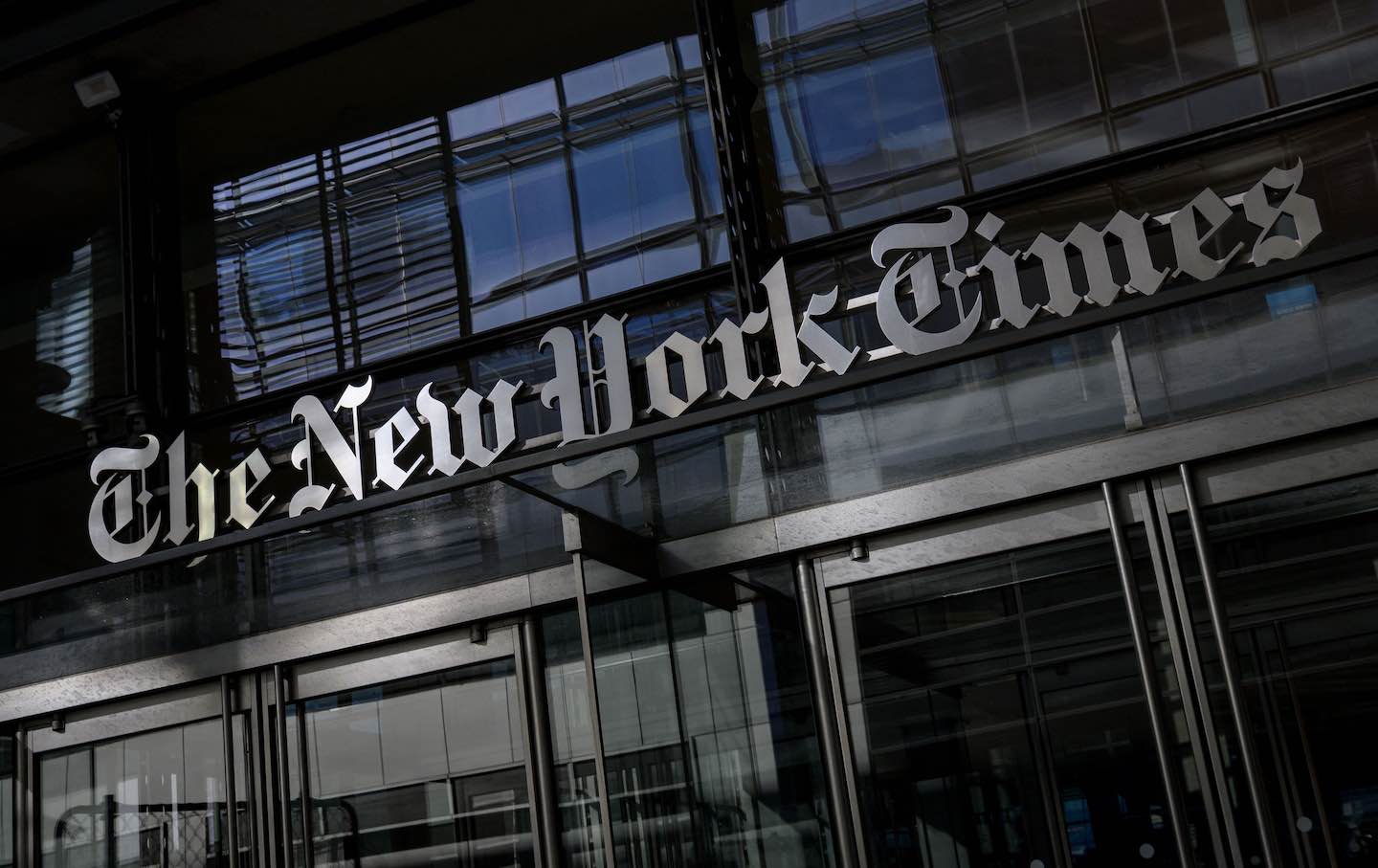
The New York Times Building.(Photo by Angela Weiss / AFP via Getty Images)
To say that it was a decision for me to put my name on the open letter to The New York Times condemning the publication for its continuous anti-trans rhetoric suggests that it required more thought than it actually did. I received an email at 11:02 on a Saturday evening from a friend who was one of the organizers of the letter, and I replied at 11:04 pm that “I would absolutely love to sign the letter.”
Like many people, I’ve watched in horror the rising transphobia that has manifested in innumerable ways across the country over the past few years. According to the ACLU, there have already been 321 bills introduced in state legislatures this year. Political figures have become the face of such tyranny, such as Florida Governor Ron DeSantis with his support of legislation like the Parental Rights in Education Act, or what many would come to refer to as the “Don’t Say Gay” law, which prohibits grade school educators from speaking about both sexuality and gender identity in the classroom.
But conservative lawmakers can’t claim monopoly over transphobic attacks. Comedian Dave Chapelle has spent nearly a decade going on transphobic tears in his stand-up routine, most recently with the support and backing of corporate giant Netflix.
A day after the open letter went live, the Times ran an article with the headline “In Defense of J.K. Rowling.” Rowling, author of the famed Harry Potter children’s book series, has tarnished her legacy in many people’s eyes with her recent turn to TERFism. The article prompted the organizers of the open letter to tack an update onto the letter, expressing disappointment over the publication of this piece.
The Times is not alone in its obscene coverage of transgender people. Other prestigious publications like The Atlantic, The New Yorker, and New York magazine have played their part in pushing forward narratives that put the lives of trans people in danger.
After the letter was published, there was backlash from the usual suspects. Writer Andrew Sullivan tweeted that the journalists who signed the letter were a “mob” and an “anathema to a free society and a free press.”
Jonathan Chait of New York’s The Intelligencer published a piece saying that the suggestion that the Times, or any publication for that matter, has any systemic influence, is “unhinged” and that the blame “lies first with politicians and the party that pass them.” But as the open letter pointed out, that is demonstratively untrue “As recently as February 8th, 2023, attorney David Begley’s invited testimony to the Nebraska state legislature in support of a similar bill approvingly cited the Times’ reporting and relied on its reputation as the ‘paper of record’ to justify criminalizing gender-affirming care.”
Chait’s argument that The New York Times has little to no influence over policy or the public’s opinion is a particular tactic that continues to crop up when criticism is levied against the paper. The consistent shrinking of the prestige press’s influence over policy and the country writ large, while framing a group of freelance journalists as antagonists with the power to silence its critics, isn’t a mistake. A group of largely working-class writers have no material power to enact widespread censorship against anyone, let alone a respected institution. It isn’t an infringement on the First Amendment to say that fearmongering coverage of trans issues should be put to an end.
But the suggestion that marginalized communities have more systemic power than they actually do is the anxiety that pulses through the recent wave of anti-trans rhetoric and other forms of rising bigotry we’ve seen across the country. The right weaponizes fears of the state’s losing control over an increasingly conscious population to ban “critical race theory” from classrooms, to defund reproductive health care clinics and restrict abortions, and to accelerate transphobia—it’s all connected.
What need does a world without fascism have for The New York Times and institutions of its ilk? What need does a world not built on manufactured fear have for publications that sustain themselves on the populace’s anxiety? The Times has committed itself to being a mouthpiece for the state, earning its respected status by allowing the powers that be to have an unfiltered voice to further broaden the scope of its violence. We see it with the anti-trans coverage, and we saw it with the infamous Tom Cotton op-ed from a few years ago, when the Republican senator called for military force against racial justice activists. There are innumerable examples.
I often find myself meditating on the words of the late Toni Morrison when she spoke about how racism is a mere distraction from doing the real work of surviving under white supremacy. “It keeps you explaining, over and over again, your reason for being,” the writer said. Building upon this idea, the common liberal refrain of “listening and learning” that is often positioned as a balm to any systemic issue is less about meeting some sort of political common ground and more about keeping marginalized communities in this constant cycle of justifying their right to exist. This fatiguing routine of outrage followed by even more outrage allows the Times and other publications of its kind to survive.
I signed my name to the letter not only as a journalist but also as a person who knows that history has shown us that when institutions create barriers for the most vulnerable amongst us, solidarity is the only way to move forward.
Hanna PhiferHanna Phifer is a journalist and culture writer.